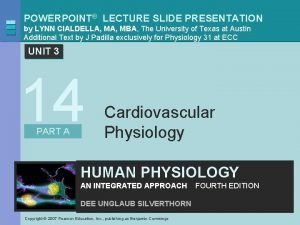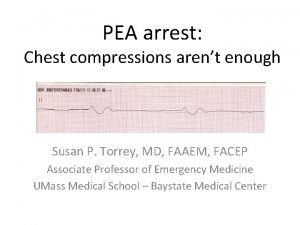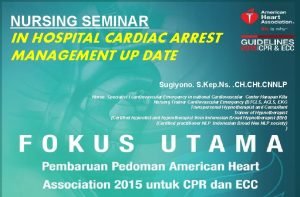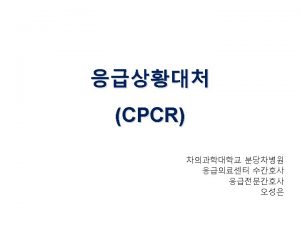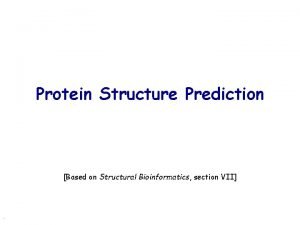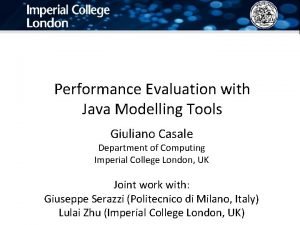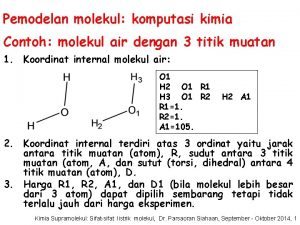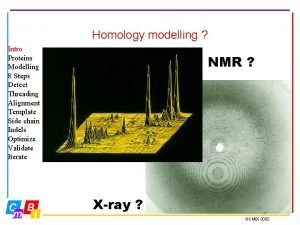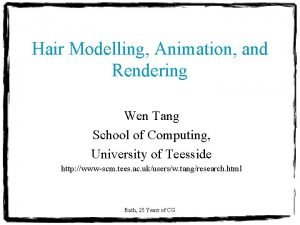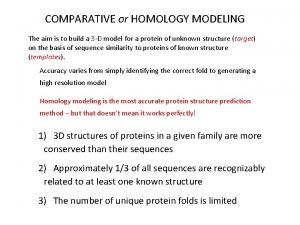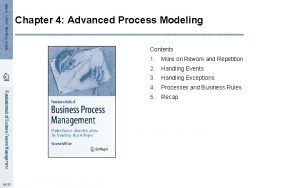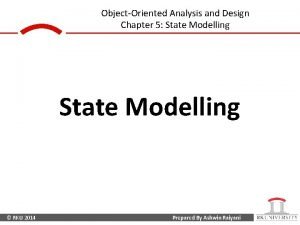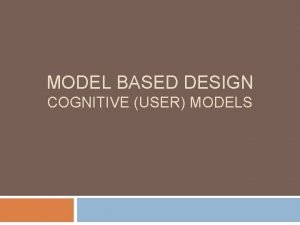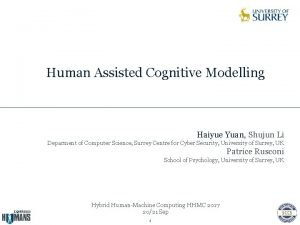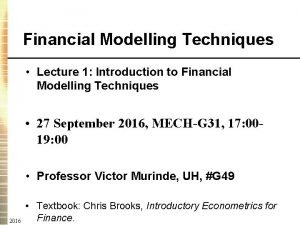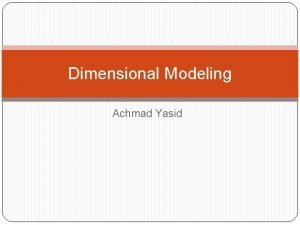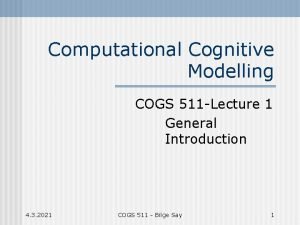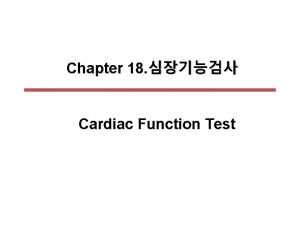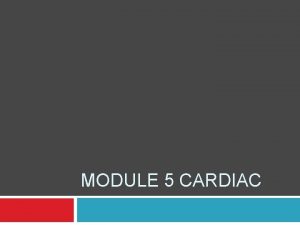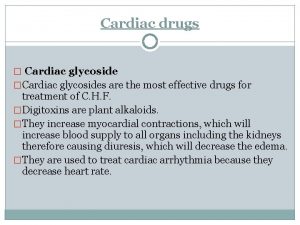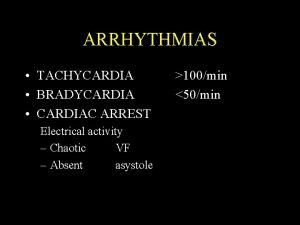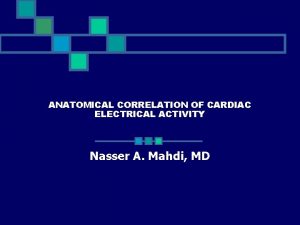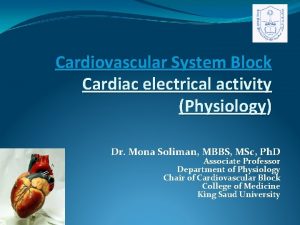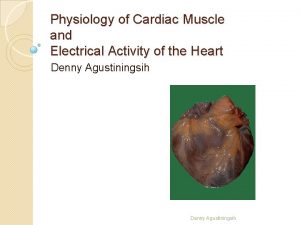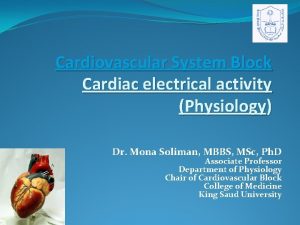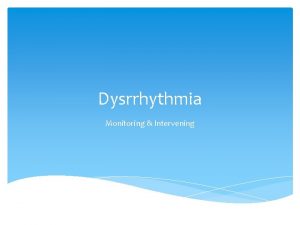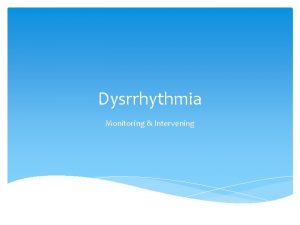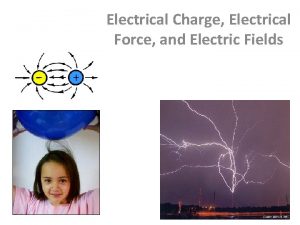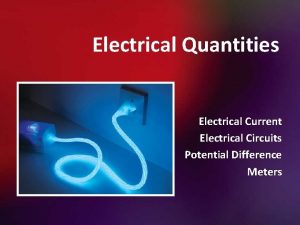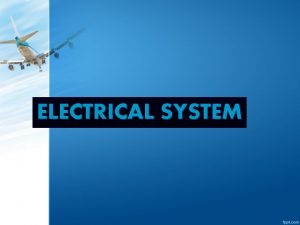A guide to modelling cardiac electrical activity in

































- Slides: 33

A guide to modelling cardiac electrical activity in anatomically detailed ventricles By: faezeh heydari khabbaz

Abstract ‘Things should be made as simple as possible, but not any simpler. ’ Albert Einstein

Introduction

Cell-level models of membrane excitability n n n physiology modelling overview currently used and available models which model to choose? historical notes and further reading

Physiology

Physiology

Physiology

Modelling overview n The total current flow through a membrane patch can be expressed as

Currently used and available models n n Simplified two-variable models First-generation biophysically detailed models Second generation cardiac cell models Reduced cardiac models

Simplified tow-variable models n The Fitzhugh Naguma model denotes activation and recovery as u and v, where

First generation biophysically detailed ventricular cell models n The general form of these models is the following:

Second generation cardiac cell models n The general form of these models is as described above, with an additional equation to balance the intracellular and extracellular ion concentrations based on the currents carried by each species:

Reduced cardiac models n These models are distinct from two variable models, because, instead of modelling excitability, activation and recovery in a generic way, these models attempt to greatly simplify the underlying electrophysiology.

Which model to choose? With so many models of cellular electrophysiology available, it is important to understand the benefits and limitations of each kind of model so that an appropriate choice can be made. Numerical solutions are time consuming to obtain when embedded in a tissue model, because it is necessary to use a short time step to resolve rapidly changing variables associated with, for example, the opening of Na channels.

Which model to choose? n The main advantage of simplified two-variable models is that they allow us to relate mechanisms to the general overall characteristics of cardiac tissue, for example, APD restitution and CV restitution. Two variable models should be used to study wave propagation in the heart where the aim is to determine general effects or to get the result in the shortest possible time.

Which model to choose? n Reduced models offer a closed link to real tissue than two-variable models. The guidelines for application of these models are similar to those for two-variable models, with slightly lower numerical efficiency on one hand, but with a more detailed match of the overall properties of cardiac cells on the other hand.

Which model to choose? n First generation models have been widely used for studies of ventricular reentry and fibrillation in simplified geometries. First generation models give a good balance between numerical efficiency and biophysically important detail.

Which model to choose? n Whole-ventricle simulations using second-generation cell models are at the top end of anatomically detailed modelling. So far studies involving these models have largely been confined to the smaller mouse and rabbit heart, where they have been used to examine the effects of electronic current flow in the rabbit and mouse heart and fibrillation in the rabbit heart. A specific problem arises due to linear or nonlinear interactions between the equations of second generation models, which may result in dependence of solutions on initial conditions, for example, the initial distribution of Ca within the cell.

Which model to choose? n Although second generation ionic models will be a good approach in anatomical modelling in the future, implementation of these models at the present time requires substantial time not only for whole ventricle computations, but also for understanding of the chosen model and its limitations in simple geometries.

Further readings n A more recent development has been the use of Markov state-based models for describing ion channel behavior.

Tissue level models of action potential propagation n n Physiology Modelling overview Currently used and available models Which model to choose? Historical notes and further readings

Physiology n n Depolarization opens Na channels, and hence initiates the subsequent action potential. Propagation of the action potential is two to three times faster in the fiber direction than orthogonal to it, and propagation orthogonal to sheets is believed to be two to three times slower than orthogonal to fibers.

Modelling overview n The granular nature of cardiac tissue may have an important effect on action potential propagation at the cell scale, but most models assume that tissue can be represented either as a regular arrangement of excitable units connected by intracellular and extracellular resistances.

Currently used and available models n n Monodomain models Bidomain models

Monodomain models n The simplest description of action potential propagation is: For models of isotropic tissue D is a scalar quantity and is given by

Bidomain models n The transmembrane potential in bidomain models is the difference between the intracellular and extracellular potentials: The overall system of bidomain equations is the following:

Which model to choose? n An obvious advantage of monodomain models is their numerical efficiency: in some cases monodomain models can be ten or more times faster for simulation of the same problem compared to bidomain models. For simulation of wave propagation in the heart, monodomain models reproduce many of the phenomena that are observed experimentally, and are thus an appropriate tool.

Which model to choose? n n The more datailed description of tissue offered by the bidomain equations is necessary to model phenomena where these have an important influence. There also some data that suggest that the behavior of reentrant waves close to the surface may be different in monodomain and bidomain models.

Whole ventricle anatomical model n n The cardiac ventricles are thick walled compared to the atria, and possess a fibrous structure with spatially varying fiber orientation. Cardiac fibers are arranged into sheets, which are separated by cleavage planes. ;

Modelling ovrview n n Whole ventricle models of electrical activity require three dimensional geometry of the ventricles, together with a description of the orientation of fibers. With the development of high-strength magnets offering high-resolution MRI and techniques such as DTMRI it has become possible to obtain anatomically detailed models without dissection.

UCSD rabbit anatomy

Aukland canine ventricle

Conclusion n The component needed to construct whole ventricle models of electrophysiology are now availabe, and this type of approach is already yielding valuable insight into the mechanisms of 3 d wave propagation.
 Mathematical modelling of mechanical systems examples
Mathematical modelling of mechanical systems examples Mitochondrian
Mitochondrian Pea ecg
Pea ecg Gambar ekg vt
Gambar ekg vt Pulseless electrical activity
Pulseless electrical activity Pulsless electrical activity
Pulsless electrical activity What is technological modelling
What is technological modelling Homology modelling steps
Homology modelling steps Modeling tools in java
Modeling tools in java Molecular modelling laboratory
Molecular modelling laboratory Modelling madness
Modelling madness Models of interaction in hci
Models of interaction in hci Private equity lbo case study
Private equity lbo case study Advantages of wireframe modelling
Advantages of wireframe modelling Homology modelling steps
Homology modelling steps Hair modelling
Hair modelling Embedded product development life cycle ppt
Embedded product development life cycle ppt Homology modelling steps
Homology modelling steps Advanced process modelling
Advanced process modelling Modeling rich interaction in hci
Modeling rich interaction in hci Unit 5 data modelling assignment 2
Unit 5 data modelling assignment 2 Tools of structured analysis
Tools of structured analysis Algorithmic cost modelling
Algorithmic cost modelling Class responsibility collaborator modelling
Class responsibility collaborator modelling State modelling
State modelling Sequence diagram penarikan uang di atm
Sequence diagram penarikan uang di atm Multijet modeling
Multijet modeling Cognitive modelling
Cognitive modelling Cognitive modelling
Cognitive modelling Financial modelling techniques
Financial modelling techniques Menurut anda apa tujuan dari dimensional modelling....?
Menurut anda apa tujuan dari dimensional modelling....? Data modelling techniques in business intelligence
Data modelling techniques in business intelligence Malatesta's modelling e.g. by mother
Malatesta's modelling e.g. by mother Cognitive modelling
Cognitive modelling

